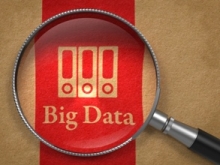If there is one aspect that is the dominating force behind all analytics and future business forecasts, it is ‘Data’. It is no surprise that Big Data is today part of the IT operations of many successful enterprises. As machine and human interactions witness a steady growth and future trends that scale massively towards an Internet of Things (IoT) functionality, Big Data is an integral part of many analytics and decision making processes.
Market research firm IDC forecasts that the effective sales of Big Data and data analytics will touch the $187 billion mark by the year 2019. Since Big Data requires adequate Big Data infrastructure, building a successful data architecture can be the difference between effective data mining operations. Big Data infrastructure is therefore of paramount significance for corporations and businesses as they look to embrace a Big Data functionality as part of their future business intelligence programs.
Making Big Data work for an enterprise is a complex phenomenon but it all starts by having the right Big Data infrastructure. Here are top five Big Data infrastructure trends to watch out for in the current year while building Big Data architecture.
1: Use of optimum flash storage
Find out why flash storage solutions have become a popular trend.
A large majority of organizations have been using in-house storage for Big Data so far to support their Big Data initiative. Big Data infrastructure is likely to adopt a change in storage patterns with the use of a storage facility that is optimized for Big Data deployment. The popularity of flash storage solutions given its performance advantages is likely to be the popular trend for the year.
For example, corporations handling huge volume of data including the likes of Google and Facebook utilize hyper scale computing environments and use PCI e-based flash storage systems to reduce latency times. While cloud storage is likely to continue as a preferred choice for corporations but when the data becomes too large, constantly transporting data to the cloud may not remain as cost effective as flash based storage options.
2: On premise processing solutions
While Big Data storage is essential, all such decisions are linked intrinsically with data processing capabilities. Since the servers intended for Big Data analytics must have enough processing power, storage facilities that offer cloud processing options have a definite advantage over their peers. Businesses that have a stern quarterly deadline to file for taxation or other reports are likely to find such an environment tailor made for their needs. This year, expect a definite move towards cloud-based processing as organizations are likely to prefer it over using on-premises processing resources.
3: Integrating hybrid IT environments
2017 is likely to be the year of hybrid IT where Big Data infrastructure offers an environment allowing single integrated set of services. Data centers for Big Data infrastructure in the past used various applications that were eventually integrated to various application tiers to finally deliver an application experience. With hybrid IT such a scenario is likely to change. Big Data capabilities may use in house data storage, flash or cloud based storage, use a software-as-a-service (SaaS) applications for Big Data analytics as the future is bracing towards infrastructure-as-a-service with end to end integration between various such environments.
4: Cloud based data centers
Big Data should not necessarily mean big time for data mining and data analytics. Any high latency time is a thing of the past as enterprises are looking at moving the entire data centers to the cloud. The Big Data architecture movement to the cloud may not be on the agenda of smaller business entities as it may be for larger corporations but the future of data servers is definitely moving closer to the cloud this year and beyond.
5: Big Data infrastructure and IoT deliverability
IoT means a huge increase in the number of interconnected devices and eventually Big Data numbers. But with IoT data analytics, it also allows enterprises to look at very specific data numbers to predict any performance oriented changes. Since examining of such specific patterns allow businesses to deliver specific business outcomes far more successfully, Big Data infrastructure and its links with IoT deliverability is a win-win communion that will be witnessing a steady growth in 2017.
Conclusion: As Big Data is changing how businesses assimilate their intelligence and future operations, Big Data is also refining to newer levels of allowing a seamless Big Data experience for enterprises.

Anand Veeramani is General Manager of Data services and Robotic Process Automation services at Happiest Minds. He has built a robust technology practice in these areas. And also additionally, oversees the key functions of overall technology practice groups, talent enablement and key technology COE in the areas of Digital Infrastructure and Security services.
Anand in an individual contribution role has built large scale big data platforms, data lakes solutions for large BFSI and enterprises customers.
Anand brings in over 19 years of experience in the IT industry. Before joining Happiest Minds, Anand has worked with TCS, Bank of America, AIG, Polaris where he handled multiple roles. He distinguishes himself in building and sustaining a strong leadership team there by enabling more customer loyalties through execution rigor and operational efficiency. He has a good track record of building, developing and executing operational strategies for business growth.
Anand has a bachelor’s degree in Mathematics from Madras University, B.Tech in Computer Science from British Columbia University and MBA- Systems from Manipal University.







